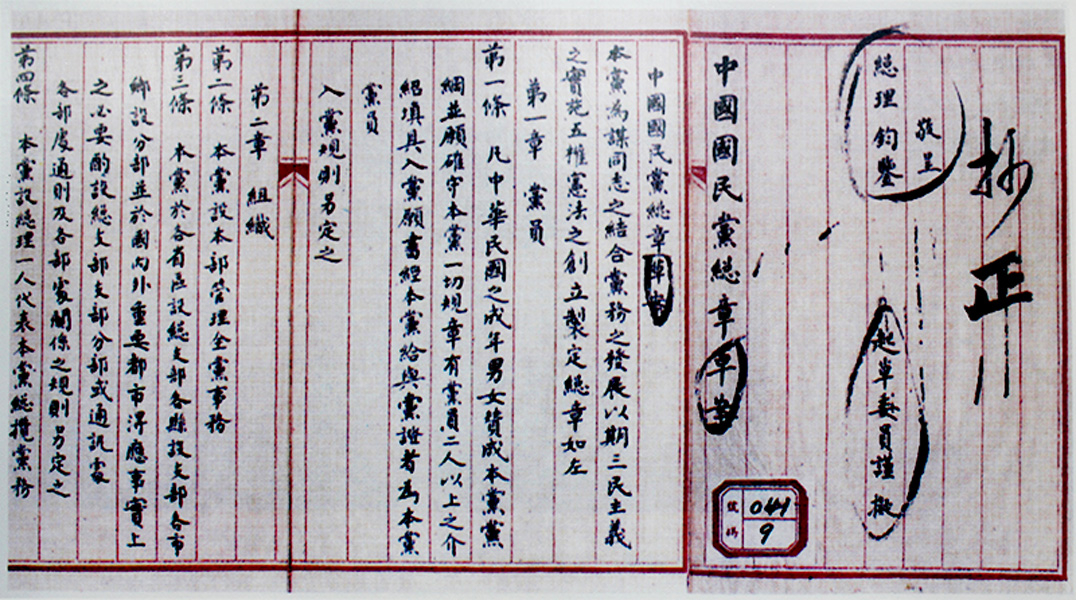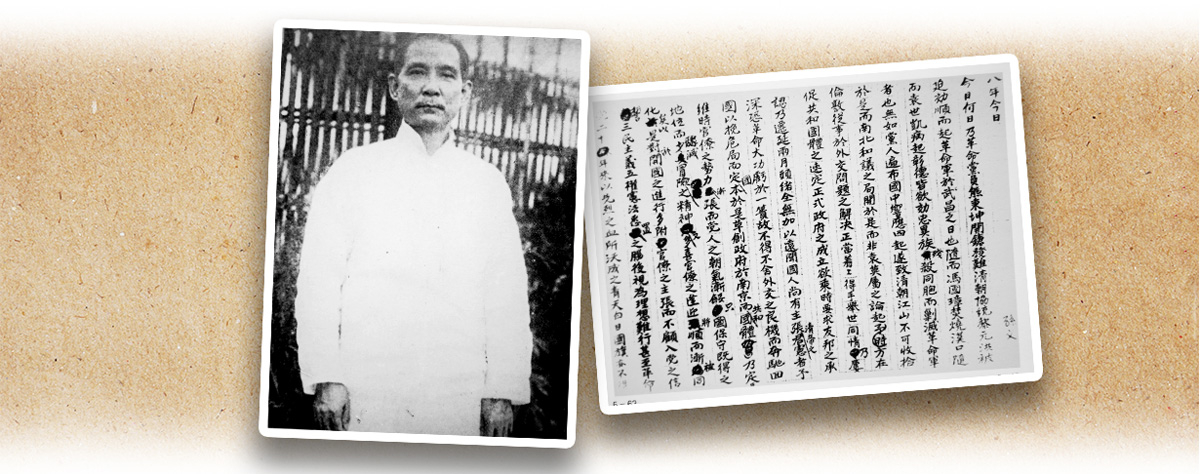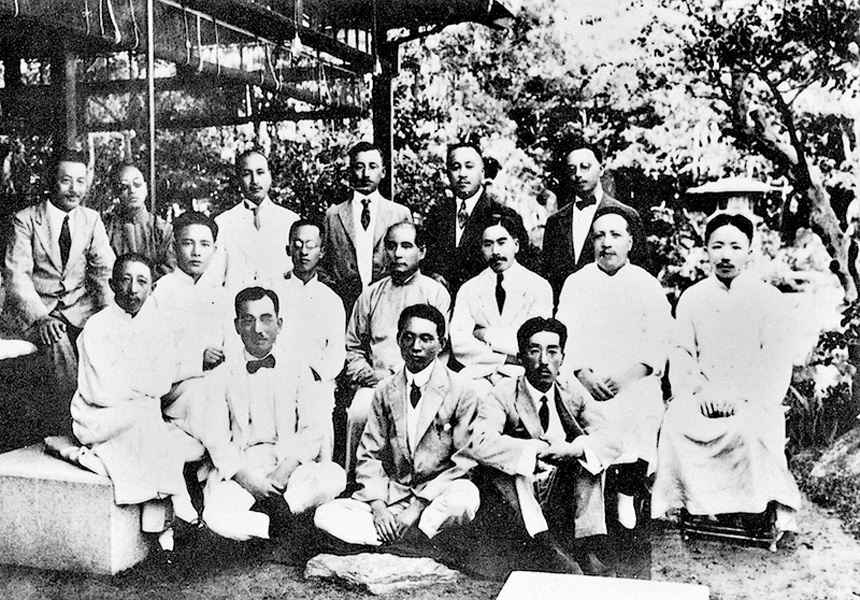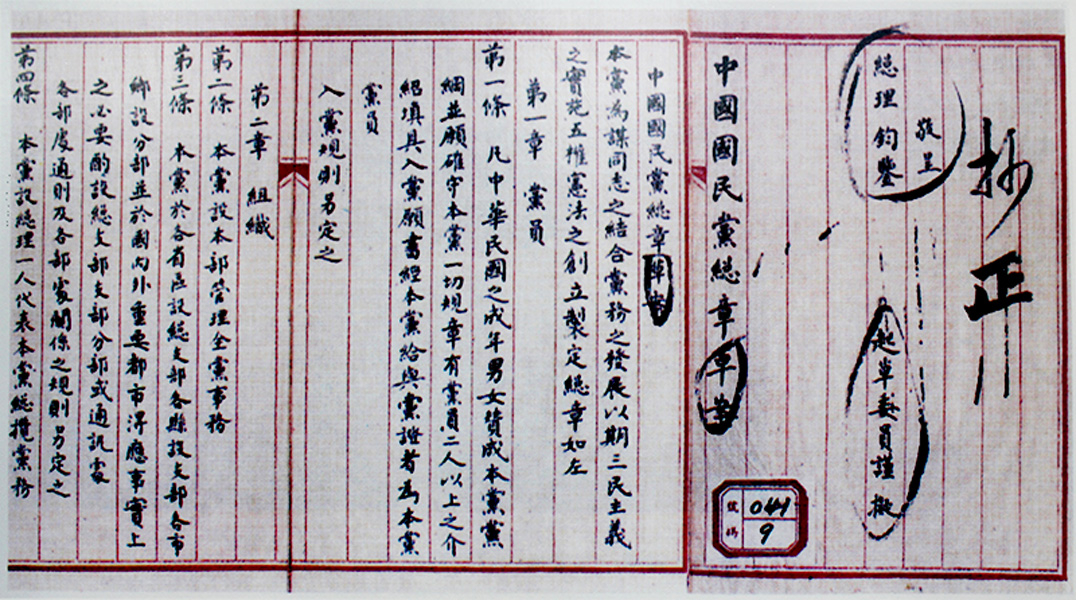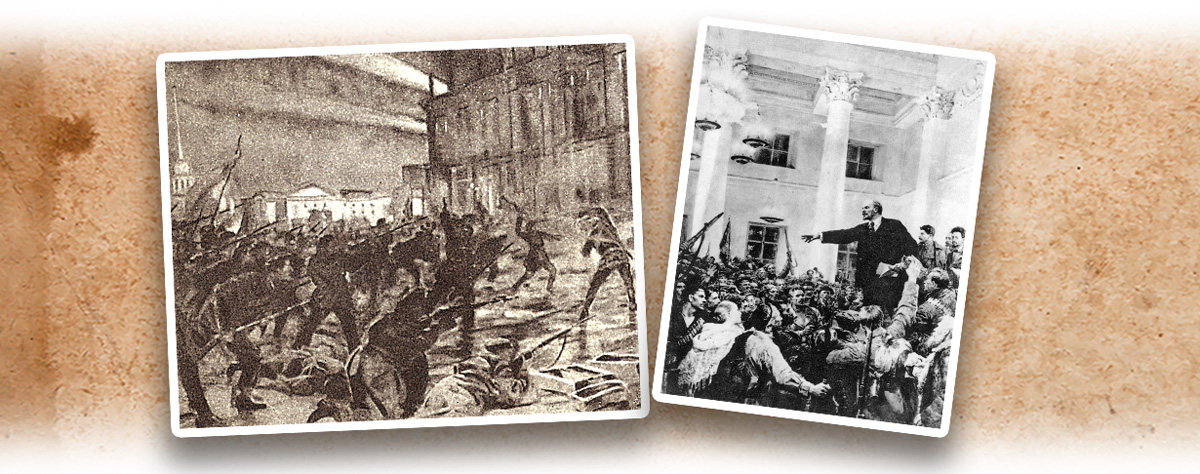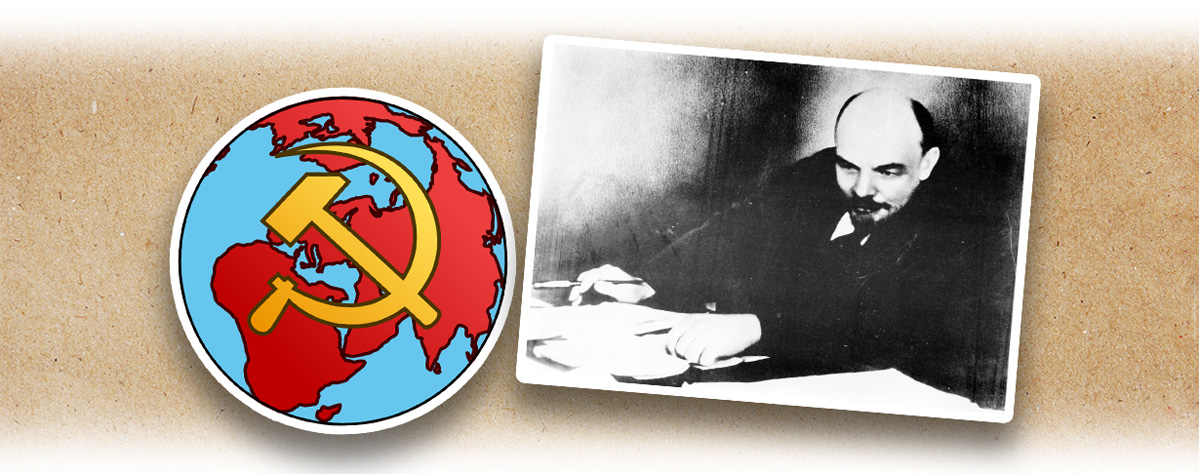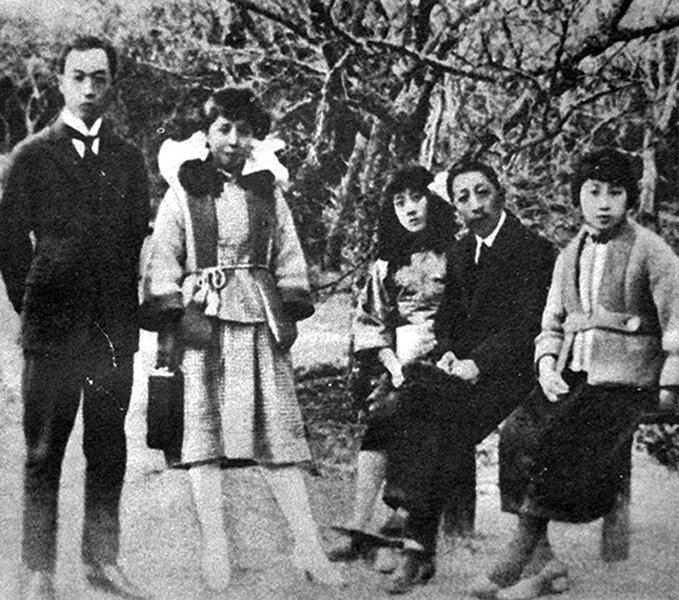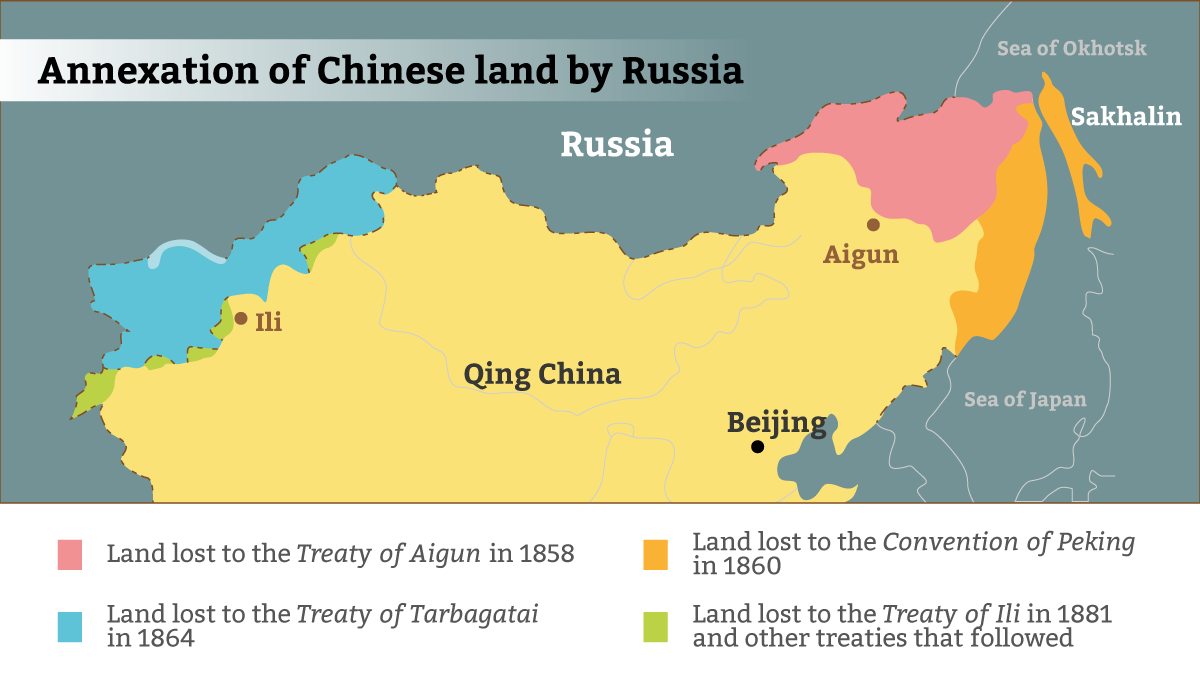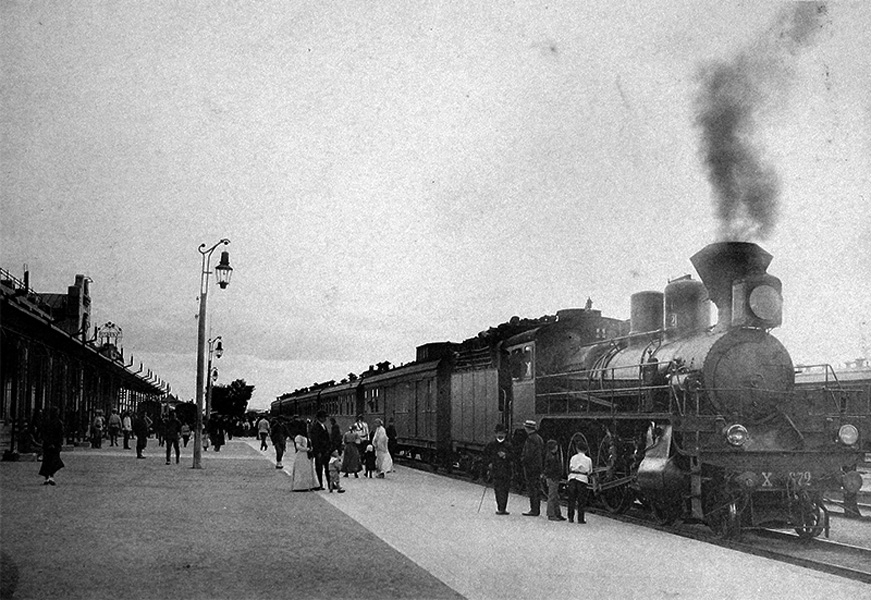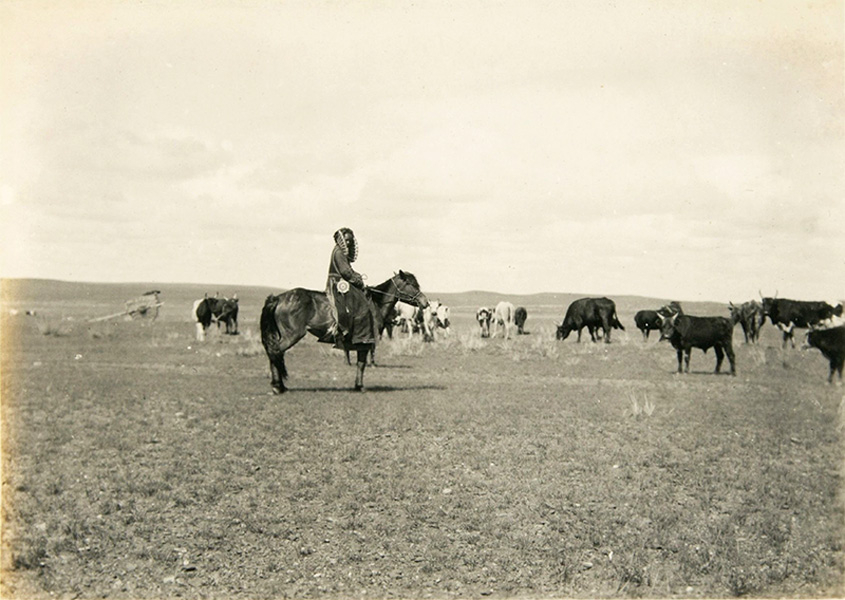Less than half a year after the May Fourth Movement (五四運動), Sun Yat-sen (孫中山) put into practice his reflection on revamping the revolutionary party. On 10 October 1919, he reorganised the Chinese Revolutionary Party (中華革命黨) into a new party called the Kuomintang of China (KMT, 中國國民黨). It wasn’t until the First National Congress of the Kuomintang of China in January 1924 that the reorganisation work was finally completed.
Shortly after its founding, the KMT received substantial assistance from Soviet Russia (renamed the Soviet Union in 1922). In two diplomatic manifestos on China issued in July 1919 and September 1920 respectively, Soviet Russia even promised to abolish the unequal treaties and privileges that Tsarist Russia had extorted from China, an offer Sun received with enthusiasm. On 26 January 1923, Sun met with Adolph Abramovich Joffe, the emissary of Soviet Russia, in Shanghai (上海). The meeting resulted in the signing of the Sun-Joffe Manifesto, or the Joint Manifesto of Sun and Joffe, an agreement for the Soviet Communist Party and the KMT to cooperate on reunifying China.
The Sun-Joffe Manifesto asserted that Communism and the Soviet system were not suitable for China. It also reiterated the Soviet Union prepared to abolish the unequal treaties Tsarist Russia acquired in China, and confirmed that it had no intention to detach Outer Mongolia from Chinese jurisdiction. The Sun-Joffe Manifesto was an important prerequisite for the later first cooperation between the Kuomintang of China and the Chinese Communist Party (CCP, 中國共產黨).
|
|
Did the Soviet government fulfil its initial promises to China and Sun Yat-sen? |
|
|
See answer below. |
After much reflection, Sun Yat-sen recognised that party building should be strengthened. On 10 October 1919, the Chinese Revolutionary Party was officially reconstituted as the Kuomintang of China, and Sun was elected as its premier. On the left: Sun in Shanghai in 1919; on the right: This Day After the Passing of Eight Years (《八年今日》), an article Sun published on the KMT’s founding day in 1919.
The political lineage of the KMT can be traced back through a series of organisations to the Revive China Society (興中會). Its iterations through history are as follows:
The Revive China Society – 1894
The United League (中國同盟會) – 1905
The Kuomintang (國民黨) – 1912
The Chinese Revolutionary Party – 1914
The Kuomintang of China – 1919
On 15 November 1922, Sun Yat-sen convened a meeting in Shanghai to deliberate on the plan to revamp the KMT. Pictured above is a group photo taken after the meeting. From the left in the middle row: Liao Zhongkai (廖仲愷), Wang Jingwei (汪精衛), Hu Hanmin (胡漢民), and Sun.
The KMT platform draft revised by Sun Yat-sen. It was passed on the meeting called by Sun for the KMT’s restructuring in Shanghai on 2 January 1923. The revised platform proclaimed the “Three Principles of the People (三民主義)” and the “Five-Power Constitution (五權憲法)” were accepted as the founding principles of the Republic of China.
On the left: the emblem of the Communist International (also known as Comintern); on the right: Lenin at the first Comintern Congress in March 1919. Founded in March 1919 with Moscow as its headquarters, Comintern’s mission was to promote world revolution, and it regarded China as fertile ground for communist expansion.
Sun Yat-sen intended to work with Soviet Russia to promote revolution in China. In October 1922, Sun dispatched Liao Zhongkai to Atami, Japan, to meet Joffe, the representative of Soviet Russia. Pictured is a group photo of Liao (second from right) and others in Atami.
On the left: Joffe; on the right: a newspaper reporting the Sun-Joffe Manifesto issued in Shanghai on 26 January 1923.
There were four general terms in the Sun-Joffe Manifesto:
(1) The two side would work together to reunify China and acknowledge that Communism and the Soviet system were unsuitable for China at that time.
(2) The Soviet Union prepared and was willing to relinquish all unequal treaties acquired in China during the Tsarist era.
(3) Without prejudice to the mutual interests, the two side would resolve the issue of the Chinese Eastern Railway’s management rights via negotiation.
(4) A confirmation from the Soviet Union that it had no intention to detach Outer Mongolia from Chinese jurisdiction.
During the late Qing dynasty (清朝), Tsarist Russia seized more than 1.5 million square kilometres of Chinese territory via unequal treaties. In two diplomatic manifestos on China issued in July 1919 and September 1920 respectively, the Soviet government expressed its willingness to relinquish the privileges and unequal treaties extorted from China by Tsarist Russia. In the Sun-Joffe Manifesto, the Soviet Union reiterated its intention and willingness to abolish all unequal treaties it acquired from China during the Tsarist era.
A train parked at Harbin Station (哈爾濱車站) on the Chinese Eastern Railway line. The Sun-Joffe Manifesto agreed to negotiate the railway management rights.
At the end of the Qing dynasty, the imperialist powers scrambled to build railways in China to grab resources and consolidate their spheres of influence. It prejudiced Chinese sovereignty. The Chinese Eastern Railway, located in Northeast China, was built and controlled by Tsarist Russia at the end of the Qing dynasty.
Outer Mongolian pastoralists during the 1920s. The Sun-Joffe Manifesto declared that “the present government of Russia has never had and will never have any intention of pursuing an imperialist policy in Outer Mongolia or detaching it from Chinese jurisdiction.”
In the Sun-Joffe Manifesto, the Soviet Union expressed its willingness to help reunify China. It agreed with Sun Yat-sen that Communism and the Soviet system did not apply to China at the time. It also showed respect for Chinese sovereignty in its handling of various issues such as its unequal treaties with China, the Chinese Eastern Railway, and Outer Mongolia. The Sun-Joffe Manifesto was thus an important prerequisite for the first KMT-CCP cooperation.
|
|
Did the Soviet government fulfil its initial promises to China and Sun Yat-sen? |
|
|
Although the Soviet government showed goodwill to China in its early founding days, it failed to fulfil its promises. For example, it did not return the 1.5 million square kilometres of Chinese territory seized by Tsarist Russia during the Qing dynasty. Also, it was reluctant to relinquish certain privileges Tsarist Russia obtained in Northeast China, and held on to them as long as possible. As for Outer Mongolia, Russia continued to support its independence despite its promise to China. In 1924, Outer Mongolia proclaimed itself the Mongolian People’s Republic, an act that the Republic of China refused to recognise until it was forced to compromise when it signed the Sino-Soviet Treaty of Friendship and Alliance (《中蘇友好同盟條約》) with the Soviet Union in August 1945. On 5 January 1946, China acknowledged the independence of Outer Mongolia. After the founding of the People’s Republic of China in 1949, China established diplomatic relations with the Soviet Union and later with Outer Mongolia. |
Sources of most photos used in this feature piece: Fotoe and misc. photo sources.




